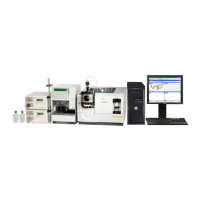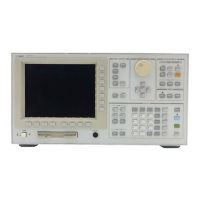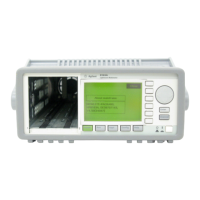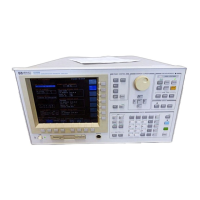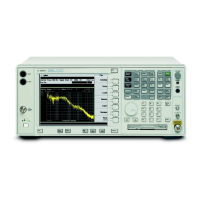Noise
Noise will introduce measurement errors. As in the case of distortion products,
the curve fitter cannot differentiate measurement errors introduced by noise
from correct data. The effects of noise on FFT-based measurements can be
minimized by averaging measurements, or for swept sine measurements, by
using longer integration times. This assumes that the noise source is
uncorrelated to the stimulus (source type) used.
To completely remove errors due to unwanted noise and nonlinearities would
theoretically require an infinite number of averages. Since this is not practical,
you must choose a compromise. Thus, some error is always present.
Averaging reduces the variance of each point in the frequency response
measurement as the number of averages increases.
The curve-fit routine uses coherence (coherence is calculated from the
tri-spectrum averaging process) and the number of averages to estimate the
variance on the measurement. The variance is then used as an estimate of the
mean error on the measured transfer function. This information is used to
improve the accuracy of curve fitting in the presence of noise. Additionally,
the max order algorithm uses the calculated measurement variance to
determine how close the curve fit must come to the measured frequency
response to be considered a “good” fit. See the sidebar called “How Max
Order Defines a Good Fit” earlier in this chapter.
Quantization Errors
Quantization error—better described as quantization distortion rather than
quantization noise—is present whenever an analog signal is digitized.
Quantization distortion can be averaged, as can distortion caused by system
nonlinearities. The dithered 16-bit A/D converter in the Agilent 35670A
provides a tightly-specified spurious-free dynamic range of greater than 80 dB
(90 dB typical).
For curve fitting, this specification is of lesser significance. The curve fit uses
the complete frequency response, with very strong emphasis on peaks in the
magnitude response. Thus, one or two spurs 80 - 90 dB down will have a
negligible effect on the fit. With averaging, the typical noise floor may be in
excess of 80 dB below the top of your input range.
To minimize quantization errors, remember not to allow a measurement
under-range condition when measuring in the FFT Analysis mode. To ensure
that the top of your “80 dB range window” is as close as possible to the peak
signal strength, press the appropriate autorange softkey under the [
Input
]
menu. These precautions are not necessary in Swept Sine mode because in this
mode, the analyzer performs optimal input ranging.
Agilent 35607A
Operator's Guide Curve Fit Option 1D3
16-15
